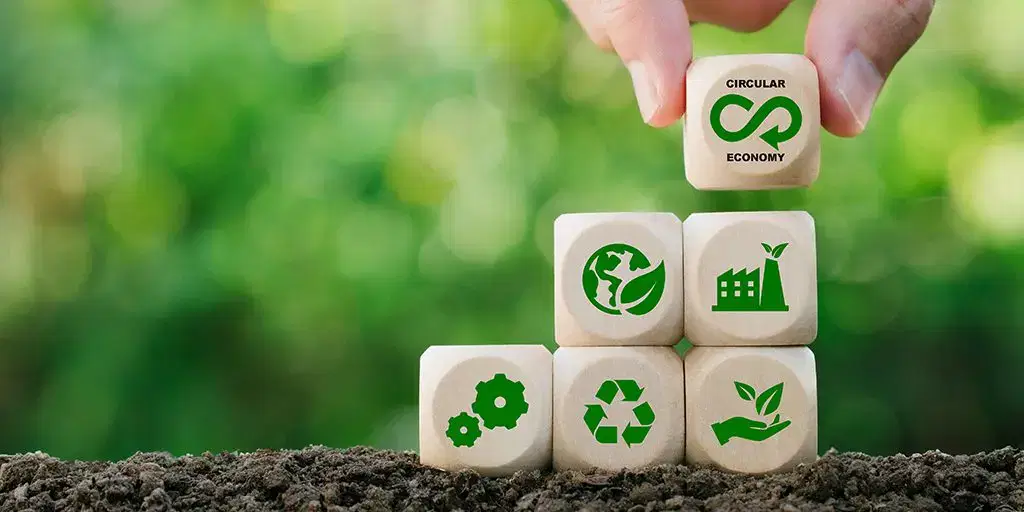Designing for a sustainable circular economy
A circular economy in the context of sustainable construction ensures that within development and project design, production and consumption of materials minimises waste and promotes regeneration. Essentially, the life cycle of products is extended by reusing, recycling, refurbishing, and downcycling existing materials for as long as possible, keeping them in circulation and reducing waste to a minimum. Previously, the built environment operated in a linear economy system – take, make, dispose – which leads to resource management inefficiencies. The decision-making process now, by using the principles of a circular economy, is to choose building materials that will not be consumed and those that are designed for longevity and reuse such as metals, wood, and plastic.
60% of total UK waste is generated from construction, demolition, and excavation (Government Statistical Service, 2019).
How we approach projects
Our sustainability team will assist in analysing a building’s adaptability, flexibility and longevity. We plan for the lifespan of a building and its systems providing clients with an end of life strategy to help them meet recycling and landfill diversion targets . Resources are not finite, so we must reuse them. We can also provide operational waste management strategies to meet both our clients goals, and regulatory or planning requirements, covering waste management and planning for waste segregation and recycling systems. We cover everything from the start of the building to how it finishes looking as far ahead as 50-100 years.
How we utilise and incorporate circular economy principles into development design:
- Building in layers – promoting accessibility for maintenance & replacement.
- Designing out waste – from project inception to completion waste reduction, reuse, and modular building approaches.
- Designing for longevity – building resilient assets with well-defined long-term needs.

Applying the Circular Economy to a commercial client project
Our sustainability team recently carried out work of this nature for a large client who had a brand-new development in the City of London and the refurbishment of another site which was changing from office use to hotel use. This client had ambitions to minimise the embodied carbon within a circular economy. More than one site on this project meant that the principles of circular economy had to apply both to demolition and building on the new site. The team carried out a pre-demolition audit as well as conceiving an end-of-life strategy.
Examples of materials considered:
- Concrete
- Metal
- Stone
- Timber
- Ceramics
- Brick
- Carpet
- Gypsum
- Glass
- Plastics
- Bitumen
- Insulation
- Concrete
- Metal
- Stone
- Timber
- Ceramics
- Brick
- Carpet
- Gypsum
- Glass
- Plastics
- Bitumen
- Insulation
The implementation, outcomes and long-term goals for this client were all contained in a thorough report with measurable data and strategy over the life cycle of the building.
Achieving net zero and ESG goals
Transitioning from a linear to a circular economy is imperative and a critical element in minimising environmental impact to achieve net zero and ESG targets. Cudd Bentley supports our clients by creating sustainable design systems that encourage responsible consumption, waste reduction, repairs, and recycling. The name itself is indicative of the aims behind a circular economy; to close loops, keep materials flowing and regenerate nature facilitating a radical shift in consumption.



